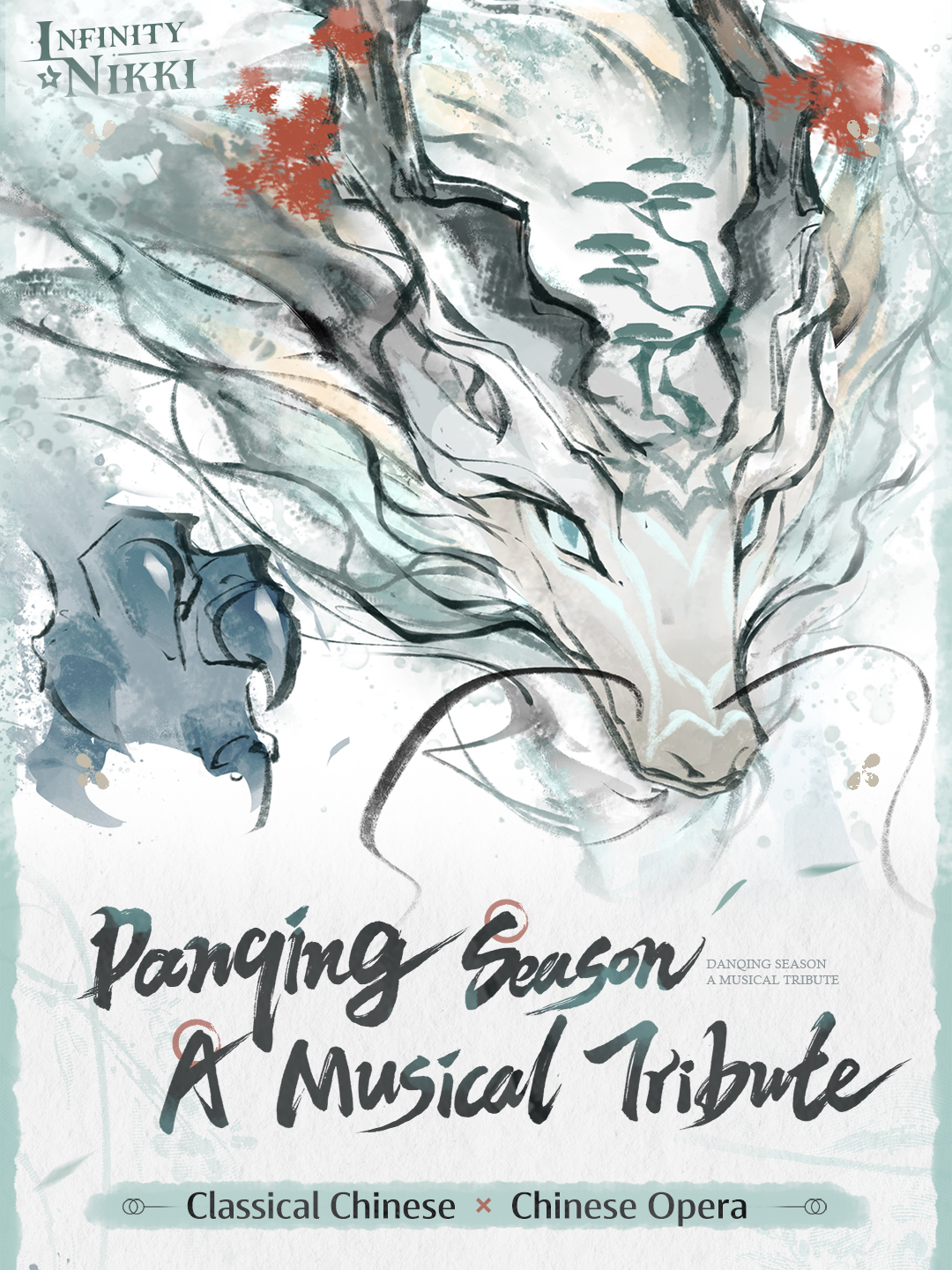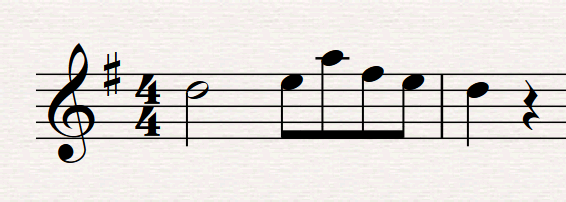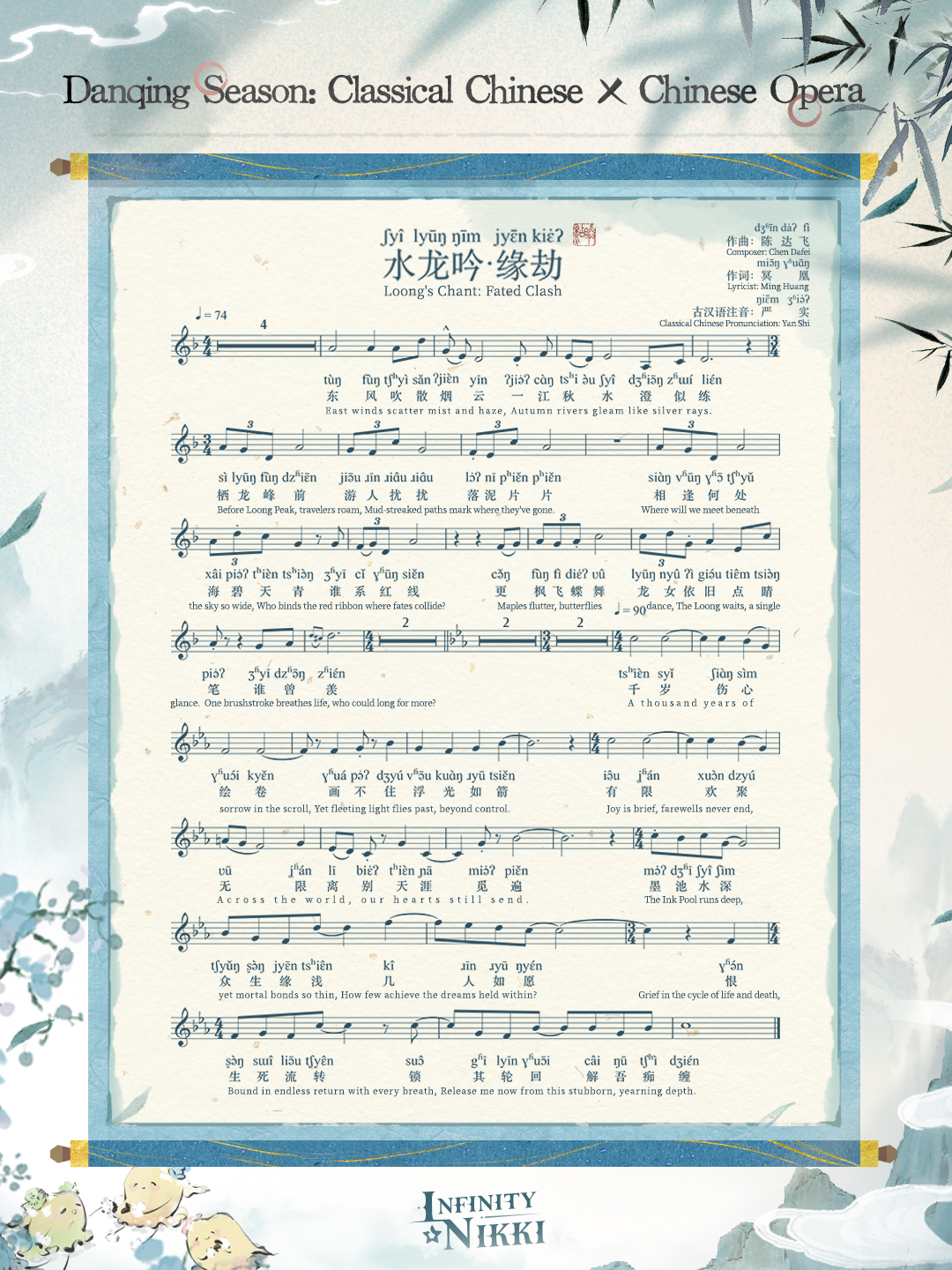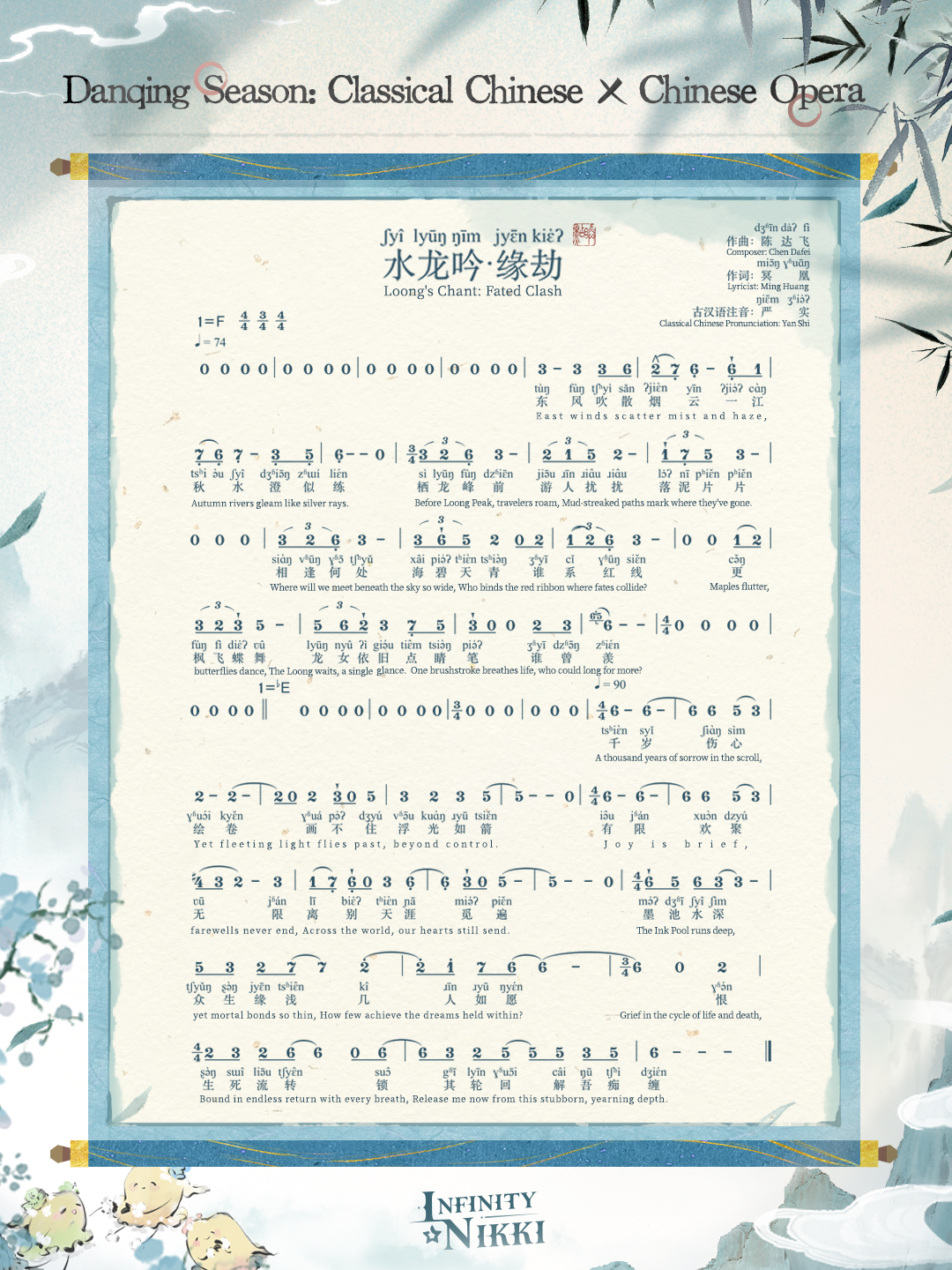
Danqing Season – A Musical Tribute
When bonds must end, new ones may begin. Yin Yuan deepens with every cycle of parting and reunion.
In this world woven from the threads of Yin Yuan, each encounter carries the weight of emotions accumulated across lifetimes.
To convey these profound feelings, our production team incorporated Classical Chinese into their music, carefully crafting every note.
Discover the story behind the music ▼
From the Music Production Team:
The story of Danqing Island is a classical Chinese tale of Yin Yuan and ancient myths. On this island, removed from the ordinary world, legends of the Loong have been passed down through generations. To evoke an idyllic, elegant atmosphere untouched by everyday life, we ultimately chose to incorporate Classical Chinese as a textual element in the music of Danqing Season. It sounds strangely familiar, yet its meaning remains elusive, distant, hazy, and imbued with rich traditional charm.
The first time we introduced a Classical Chinese music segment was during Nikki and Yue Bai's umbrella dance cutscene. It served as a test of blending Classical Chinese with Chinese opera and confirmed our decision to use this combination in other scenes and cutscenes as well. The gentle, flowing tones of the opera, paired with the vaguely familiar yet elusive Classical Chinese, create a hazy, enchanting atmosphere. It's much like Yue Bai, carrying stories from long ago into the world, and like Danqing Island itself, an ancient and otherworldly paradise.
Ultimately, we created many Classical Chinese opera-style vocal lines for the Danqing Realm, Inkrealm Scrolls, story cutscenes, Clouded Loong outfit animations, boss battles, PV music, and more.
Fun Fact:
The tones of Classical Chinese are very different from modern Mandarin. While Mandarin has four tones, the Classical Chinese we follow has seven, and it also includes the checked tone, a short, clipped pronunciation absent in Mandarin. This gives Classical Chinese a delicate, nuanced charm, making delivery richly expressive. At the same time, the rhyming rules of Classical Chinese differ greatly from those of Mandarin. Often, the text appears to rhyme, but the actual pronunciation does not align, making melody composition for the music particularly challenging.
Picking Up the Story...
Together with Chinese opera performers, we systematically studied Classical Chinese pronunciation under the guidance of a teacher until we could read the annotations and accurately pronounce each sound and tone. We also experimented with composing lyrics for the PV music. To ensure the rhymes were correct and the lines flowed naturally, we consulted rhyme dictionaries and refined the lyrics as we went.
The creation of the boss battle track "Loong's Chant: Fated Clash" was fascinating. In the (Chinese) lyrics, the final characters of each line, such as "liàn," "piàn," and "xiàn," use the ancient departing tone, a rising tone that is the opposite of Mandarin pronunciation. Traditional Chinese melodic composition also follows the principle of "yi zi xing qiang," meaning the melody is shaped according to the pronunciation and tone of each character. As a result, melodies based on Classical Chinese pronunciation naturally have a flavor distinct from modern popular music. This track's melody blends Classical Chinese pronunciation with modern aesthetic sensibilities.
When setting Classical Chinese lyrics to music, it is important not only to carefully manage the relationship between pronunciation and melody, but also to ensure the lyrics' inherent rhythm aligns with the musical tempo. Unlike popular songs, which often maintain a steady 4/4 or 3/4 time signature, this Classical Chinese lyrical form features highly varied meter, alternating between lines of 6, 7, 4, 5, and 3 characters. It includes sequences of four-character lines as well as shorter lines differing by only one or two characters. To capture the internal rhythm and flow of the lyrics, the song must employ intricate, staggered rhythmic patterns.
Yin Yuan
In the story of Danqing Island, "Yin Yuan" is the central concept behind all characters' comings and goings, joys and sorrows. To reflect this, we embedded a "Yin Yuan" musical motif throughout the story music, serving as a thread that ties the entire narrative together. It first appears when Nikki wakes up on Danqing Island, accompanying her interactions with the new world as well as her joyful or sorrowful conversations with the villagers. It also underlies the world's atmospheric background, and even Nikki's battle with and subsequent reunion with the Loong. This "Yin Yuan" motif runs throughout Nikki's entire story experience on Danqing Island.
The music not only develops the concept of "Yin Yuan," but also explores the idea of "Inner and Outer." Just as the story presents mirrored inner and outer worlds, the music employs a similar "mirror" technique. This is particularly evident in the login music, where the Classical Chinese instruments, the Xiao and the Guqin, engage in a musical dialogue, reflecting the story's mirrored structure.

Graphic Example: The "mirroring" technique for melody composition. The image below shows an up-down mirror image of the "Yin Yuan" motif.

In short, Danqing Season is also a celebration of classical Chinese music. Our in-house music production team, FoldEcho, has blended elements of Classical Chinese and traditional opera, delving deep into the story and gameplay experience. We hope to bring you beautiful music through which you may form your own Yin Yuan!





